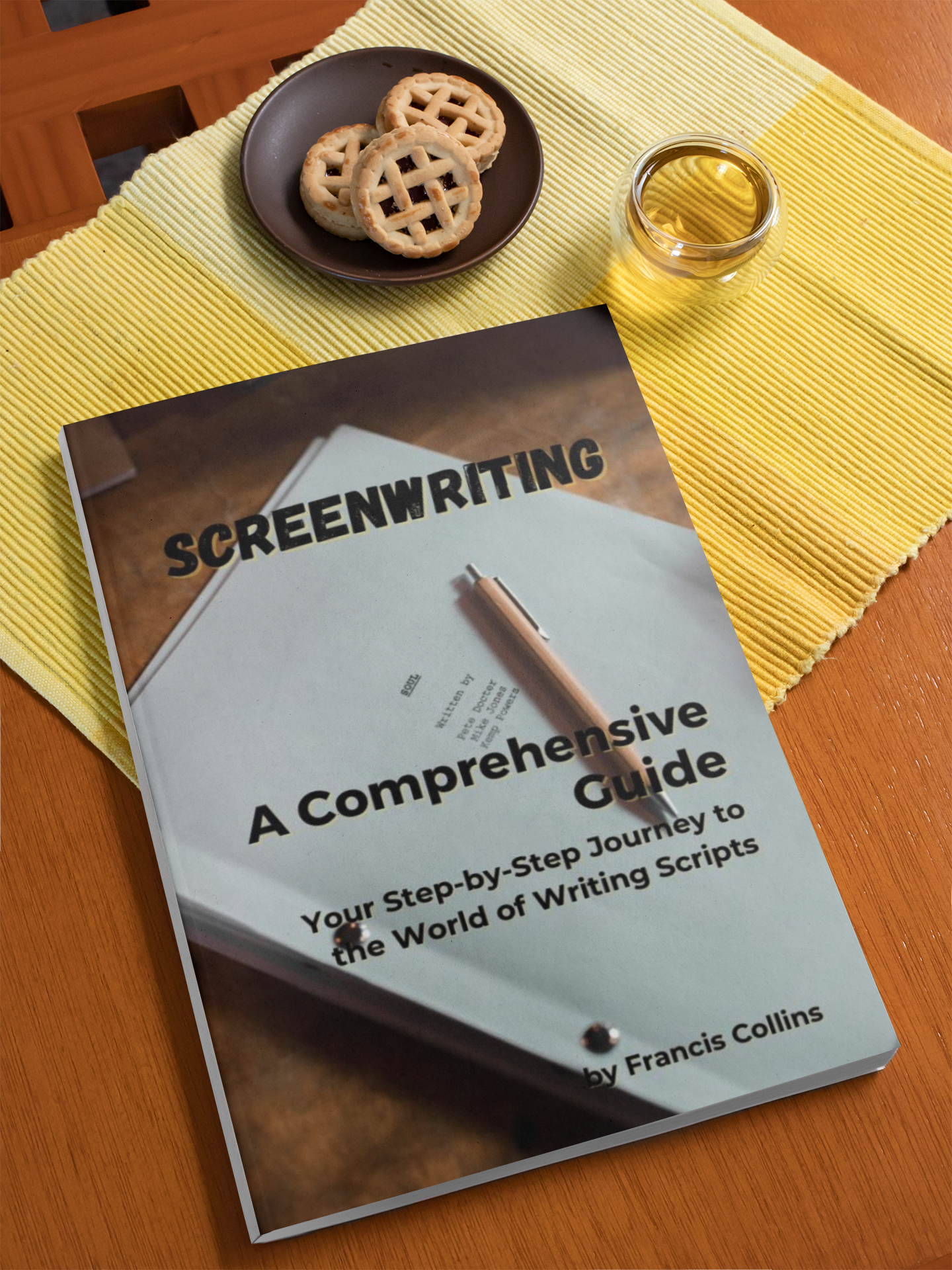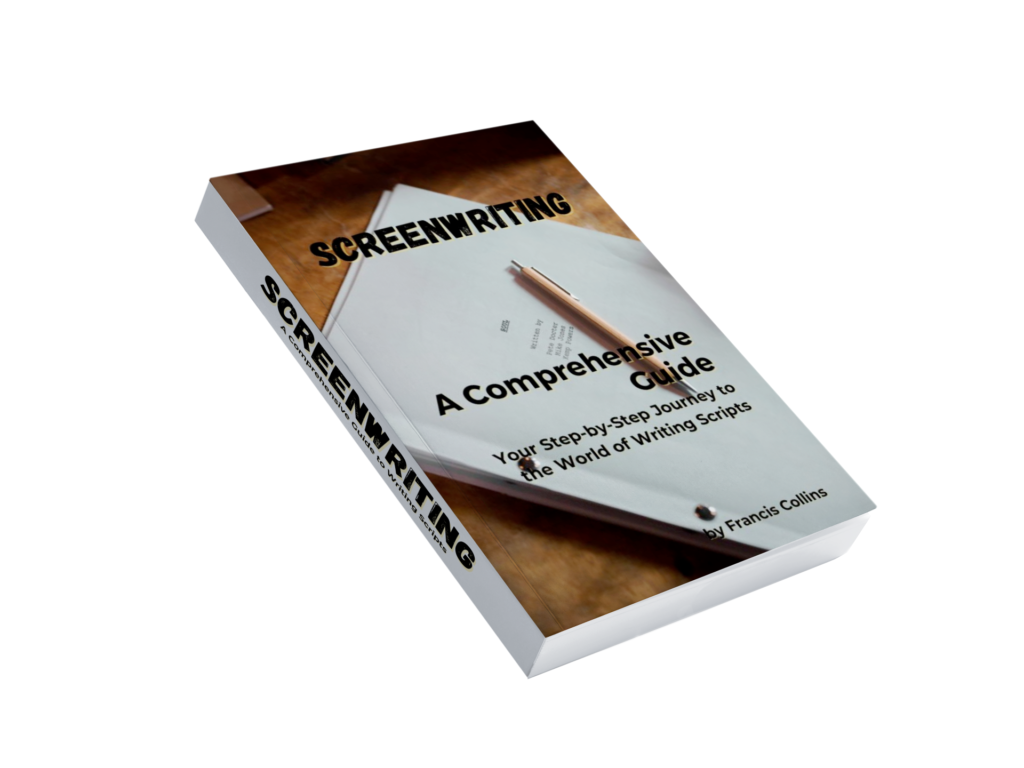There’s something truly magical about the process of bringing a story from the depths of your imagination to the big screen. For years, I had a story simmering within me, but it felt like an insurmountable task to turn it into a reality. That was until I stumbled upon a book that changed everything: “SCREENWRITING: A Comprehensive Guide to Writing Scripts.” In this article, I’ll take you on my journey of how this book not only helped me write a short movie script but also paved the way for its imminent production in just a few days.
The Awakening
The first chapter of “SCREENWRITING: A Comprehensive Guide to Writing Scripts,” titled “Introduction to Screenwriting,” served as my initiation into the world of screenwriting. It shed light on the pivotal role of a screenwriter – the invisible architect who lays the foundation for cinematic magic. For someone who had always been fascinated by the movies, this revelation was nothing short of inspiring.
As I read about the significance of storytelling in filmmaking, I felt a spark of excitement ignite within me. The book’s opening chapter set the stage, establishing that screenwriting was not just about words on paper but about crafting stories that resonate with audiences on a profound level.
A Journey of Ideas
Every great film begins with an idea, and chapter two, “Developing Your Story Idea,” was my guiding light in this journey. It was here that I learned how to find inspiration in the everyday and how to mould raw concepts into compelling narratives.
One of the most valuable lessons I gleaned from this chapter was the importance of identifying my target audience and genre early in the creative process. Armed with this knowledge, I started shaping my story into a concept that could not only engage viewers but also cater to a specific audience’s preferences.

Crafting Memorable Characters
Characters are the heartbeat of any screenplay, and chapter three, “Creating Compelling Characters,” taught me how to breathe life into them. The book delved deep into character development, arcs, and the art of writing authentic and engaging dialogue. With these insights, I was able to create characters that felt not just real but also relatable to the audience.
As I worked on my script, I found myself diving deeper into the minds of my characters, understanding their motivations, fears, and desires. The book had not only equipped me with the tools to create characters but also encouraged me to empathize with them, making them richer and more compelling.
The Blueprint of a Story
Understanding the structure of a screenplay is fundamental to effective storytelling in film, and chapter four, “Structure and Plot,” was my guide in this aspect. It introduced me to the three-act structure, a tried-and-true framework for crafting narratives that resonate with audiences.
This chapter was a game-changer. It taught me how to develop a well-paced plot with compelling conflicts and resolutions. The three-act structure was my compass as I navigated the intricate plot twists and character arcs of my script.
Formatting and Industry Standards
While creativity is the heart of screenwriting, adhering to industry standards is equally crucial. In “Formatting and Industry Standards,” the book meticulously walked me through the nuances of proper screenplay format. This chapter was invaluable in ensuring that my script looked professional and was ready to face industry scrutiny.
The Path to Production
The final chapter, “Revisions, Feedback, and Getting Your Script Noticed,” was where everything culminated. It emphasized the importance of revising and seeking feedback, crucial steps in the screenwriting journey. Armed with a polished script, I embarked on the daunting but exhilarating process of submitting my work to industry professionals.
The Script Goes into Production
And then came the moment I had been dreaming of for years – my short movie script was greenlit for production, set to begin filming in just a few days. It was an incredible feeling, a culmination of countless hours of hard work and the guidance I had received from “SCREENWRITING: A Comprehensive Guide to Writing Scripts.”
The script had not only passed the rigorous evaluation of industry insiders but had also captured the imagination of a talented production team. The characters I had breathed life into, the plot I had meticulously crafted, and the format I had perfected were now all coming together to become a tangible reality.
Conclusion
The journey from an idea to a movie set can be a daunting one, filled with challenges and uncertainties. However, with the right guidance and unwavering dedication, dreams can indeed become a reality.
“SCREENWRITING: A Comprehensive Guide to Writing Scripts” was my North Star throughout this transformative journey. Its pages held the secrets of storytelling, character development, plot structuring, and professional formatting. This book not only equipped me with the knowledge but also instilled in me the confidence to embark on this creative adventure.
As the days count down to the start of production, I can’t help but reflect on how far I’ve come. From a mere concept in my mind to a fully-fledged film project ready to grace the silver screen, the journey has been incredible. It’s a testament to the power of storytelling and the profound impact a book can have on one’s life.
So, if you have a story within you waiting to be told, I encourage you to pick up a copy of “SCREENWRITING: A Comprehensive Guide to Writing Scripts” Let it be your guide on your own journey from words to screen. Who knows, your dream may just be the next one to captivate audiences around the world.



